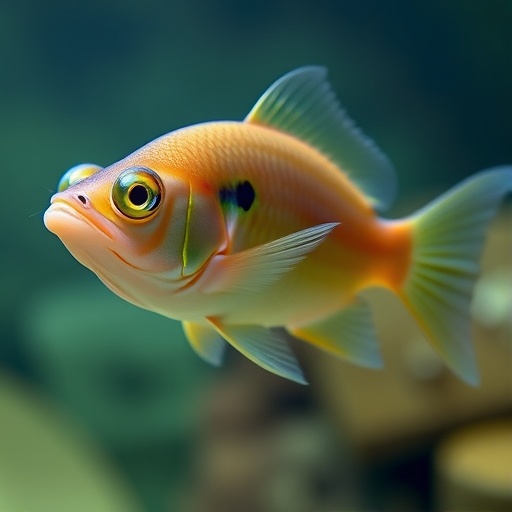In a groundbreaking breakthrough in parasitology, scientists have identified a previously unknown species of the genus Diaphorocleidus, a parasitic flatworm that afflicts the gills of certain Neotropical freshwater fishes. This remarkable discovery, detailed in a recent publication in Acta Parasitologica, reveals a complex and specialized parasite-host relationship involving three distinct species of Characiform fishes endemic to Brazil’s rich aquatic ecosystems. The new species broadens our understanding of monogenean diversity and sheds light on the ecological dynamics shaping parasite populations in tropical freshwater habitats.
Diaphorocleidus, belonging to the family Dactylogyridae within the Monopisthocotyla order, constitutes a group of ectoparasitic flatworms primarily targeting the gills of fish. Despite their minute size, these worms exert significant physiological stress on their hosts by attaching to delicate gill tissues, thereby interfering with respiratory efficiency and potentially compromising fish health. The newly identified species, recorded from multiple host species, exemplifies the intricacy of parasite adaptation and coevolution in freshwater biomes, especially in the biodiverse Neotropical region.
One of the most compelling aspects of this discovery lies in the precise morphological and molecular characterization of the parasite. Researchers employed advanced microscopy techniques alongside genetic sequencing to delineate the novel species from its close relatives accurately. Distinctive features, such as the structure of haptoral anchors—the specialized attachment organs—and reproductive anatomy, were meticulously documented, establishing clear diagnostic criteria. These findings highlight the indispensable role of integrative taxonomy in resolving ambiguities within morphologically similar parasitic taxa.
The parasitic relationship was observed in three species of Characiform fishes, a highly diverse order known for their ecological significance and economic value in Neotropical freshwater environments. The parasite’s presence across multiple host species suggests a broader host range than previously documented for Diaphorocleidus, indicating potential ecological versatility and adaptation to various host microhabitats. This aspect has profound implications for fish health management and conservation strategies, particularly in regions where these fish serve as critical components of aquatic food webs.
Ecologically, the discovery underscores the role of parasites as integral elements influencing fish population dynamics and community structure. Parasites like Diaphorocleidus can regulate host abundance by modulating reproductive success and survival rates, thereby indirectly affecting trophic interactions and nutrient cycling within freshwater ecosystems. Understanding such interactions is fundamental to predicting how environmental changes, including pollution and habitat modification, impact the delicate balance of biodiversity in tropical freshwater habitats.
The evolutionary insights derived from this novel species also contribute to the broader understanding of monogenean diversification. Comparative analyses indicate that speciation in Diaphorocleidus may be tightly linked to host specificity and geographic isolation. This pattern echoes evolutionary processes observed in other parasitic taxa, where co-divergence with hosts drives lineage differentiation. Investigations into the genetic divergence and phylogeography of the new species promise to unravel how historical biogeographical events shaped contemporary parasite distribution.
Furthermore, this new species establishes a baseline for monitoring emerging parasitic infections that may arise from environmental disturbances or anthropogenic activities. Freshwater ecosystems, already vulnerable to climate change, pollution, and invasive species, could harbor shifts in parasite prevalence and virulence. Early detection and taxonomic clarity are thus essential for developing biomonitoring programs aimed at preserving fish health and ecosystem integrity.
The methodological rigor applied in this study sets a standard for future parasitological research. High-resolution imaging combined with molecular phylogenetics enables researchers to overcome traditional limitations posed by morphological convergence and cryptic species complexes. Such integrative approaches not only facilitate species identification but also help elucidate evolutionary relationships and functional biology of parasites within their ecological contexts.
This discovery also raises intriguing questions regarding parasite transmission pathways and host interaction mechanisms. How the new Diaphorocleidus species locates, colonizes, and successfully maintains presence on different fish hosts warrants extensive investigation. Unraveling these biological processes may reveal novel adaptations and contribute to broader parasitology knowledge, potentially informing fishery management and aquaculture practices in Neotropical regions.
In addition to its biological significance, the finding has broader conservation implications. Neotropical freshwater habitats face escalating threats from deforestation, dam construction, and unsustainable exploitation. Parasites, often overlooked in conservation planning, serve as bioindicators of ecosystem health. Detailed data on parasite diversity and distribution can thus enhance ecological assessments, aiding policymakers in crafting more informed strategies to safeguard aquatic biodiversity.
The authors’ multidisciplinary approach, combining taxonomy, molecular biology, and ecology, represents an ideal model for addressing complex biodiversity issues. By situating parasite studies within a holistic environmental framework, this research bridges gaps between parasitology and conservation biology, emphasizing that parasites are not mere pathogens but critical components of biodiversity with essential ecological functions.
This study also underscores the necessity of preserving natural history collections and promoting fieldwork in understudied regions. Only through sustained exploration and specimen collection can scientists uncover hidden diversity, as exemplified by the identification of this new Diaphorocleidus species. Continued investment in taxonomic expertise and infrastructure remains vital for improving biodiversity inventories in tropical freshwater ecosystems.
Looking ahead, the discovery invites expanded research into host-parasite coevolution, host range specificity, and potential impacts on fish population fitness. Experimental studies could elucidate the physiological responses of infected hosts and the parasite’s life cycle dynamics, providing further insights into disease ecology and epidemiology. Such knowledge can inform mitigation strategies against parasite outbreaks, especially under changing environmental conditions.
In conclusion, the identification of a new Diaphorocleidus species parasitizing Neotropical Characiform fishes constitutes a significant advancement in freshwater parasitology. It enriches our comprehension of parasite biodiversity, host interactions, and ecosystem health within Brazil’s aquatic environments. This finding exemplifies the ongoing revelations achievable through integrative scientific methodologies and highlights the indispensable role of parasites in the fabric of tropical freshwater ecosystems.
Subject of Research: New species discovery within the genus Diaphorocleidus, a monogenean gill parasite infecting Neotropical Characiform fishes in Brazil.
Article Title: A New Species of Diaphorocleidus (Monopisthocotyla: Dactylogyridae), a Gill Parasite from Three Neotropical Characiform Fishes from Brazil.
Article References:
Jorge, M., Ebert, M.B. & da Silva, R.J. A New Species of Diaphorocleidus (Monopisthocotyla: Dactylogyridae), a Gill Parasite from Three Neotropical Characiform Fishes from Brazil. Acta Parasit. 70, 224 (2025). https://doi.org/10.1007/s11686-025-01165-1
Image Credits: AI Generated
DOI: https://doi.org/10.1007/s11686-025-01165-1




